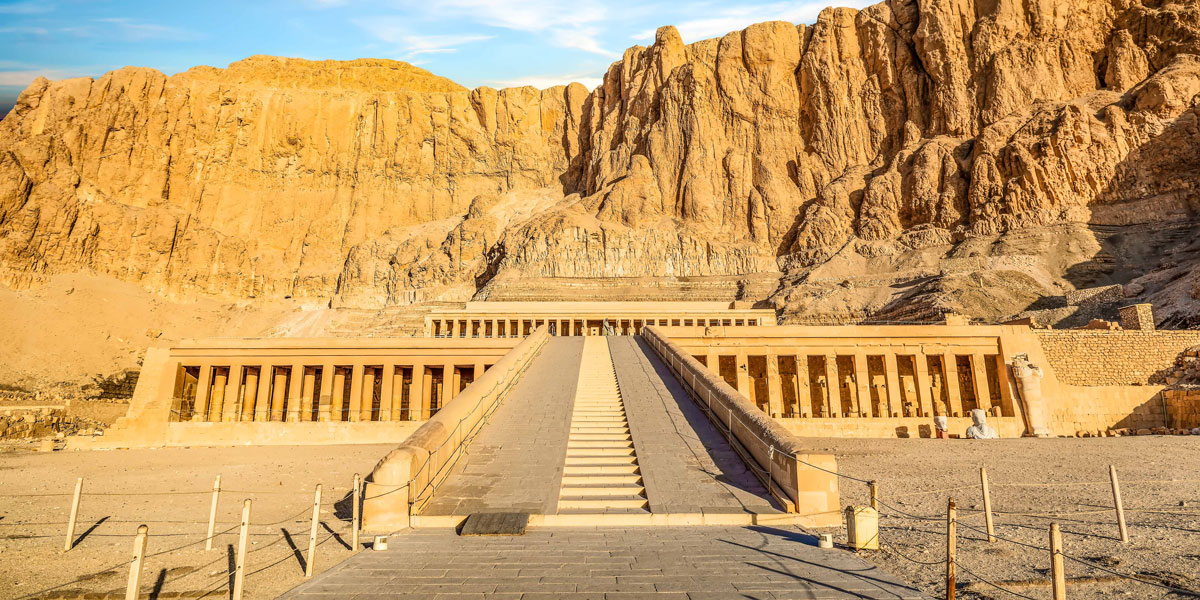The mortuary Temple of Queen Hatshepsut of Dynasty XVIII was built just north of the Middle Kingdom temple of Mentuhotep Nebhepetre in the bay of cliffs known as Deir el-Bahri. In ancient times the temple was called Djeser-djeseru, meaning the ‘sacred of sacred’. It was undoubtedly influenced by the style of the earlier temple at Deir el-Bahri, but Hatshepsut’s construction surpassed anything which had been built before both in its architecture and its beautiful carved reliefs. The female pharaoh choose to site her temple in a valley sacred to the Theban Goddess of the West, but more importantly it was on a direct axis with Karnak Temple of Amun on the east bank. Also, only a short distance on the other side of the mountain behind the temple was the tomb that Hatshepsut had constructed for herself in the Valley of the Kings (KV20).
Hatshepsut Temple
The Temple of Hatshepsut was built on three terraced levels, with a causeway leading down to her Valley Temple (now lost) which would have been connected to the River Nile by a canal. Gardens with trees were planted in front of the lower courtyard.
Hatshepsut Temple Interior Design
Upon approaching the first court, colonnades flank the ramp leading to the second court. At the northern colonnade’s end stands a colossal statue of the queen, reconstructed from fragments. The southern lower portico contains shallow reliefs. With the right light, they reveal scenes of two obelisks transported by ship from Aswan, escorted by soldiers, standard-bearers, musicians, and priests. Further along, the queen presents the obelisks to Amun at Karnak during dedication ceremonies.
The lower northern portico shows Hatshepsut in a boat, engaging in ritual scenes of fowling and fishing. A net of waterfowl is drawn by two gods. Other scenes depict the queen offering statues, driving calves to Amun, and trampling foes as a sphinx.
Crouching lions guard the base of the ramp to the second terrace. In the second court, a brick temple dedicated to Amenhotep I and Ahmose-Nefertari was destroyed when Senenmut, Hatshepsut’s architect, began building the new temple. A brick shrine dedicated to Aesclepius by Ptolemy III, also now gone, stood in front of the southern portico. At the southern portico’s end is a Chapel of Hathor, where reliefs show Hatshepsut being licked or suckled by the goddess in cow form.
Hathor-headed pillars line the hall, leading to the chapel’s sanctuary area cut into the hillside. Unfortunately, these inner chambers are usually closed to visitors. The northern wall in the Hathor Chapel’s hypostyle shows colorful scenes of boats, a parade of soldiers, a panther, and Libyans dancing in a Hathor festival.










